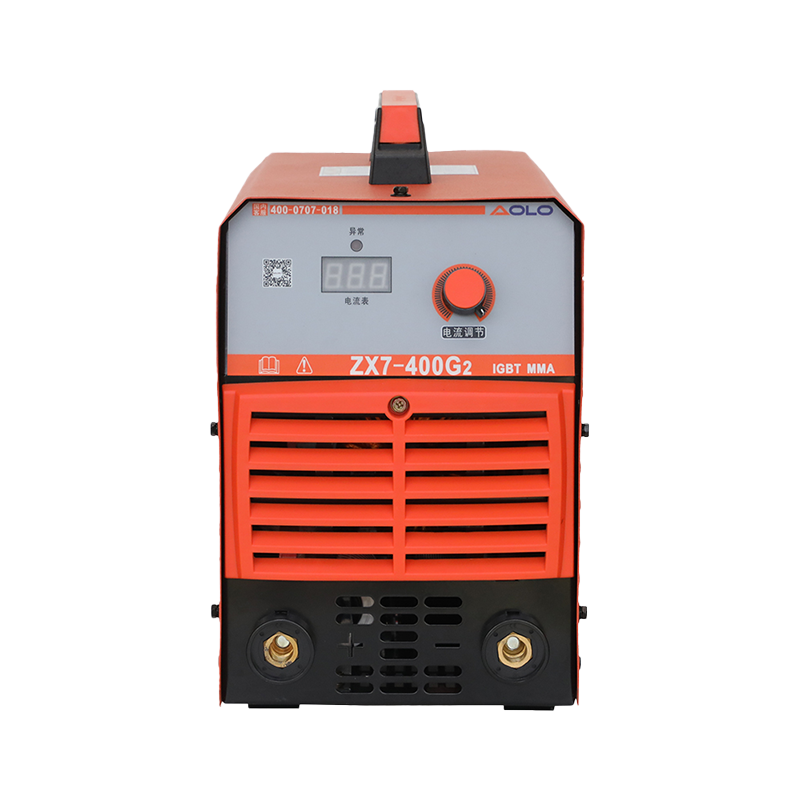NBC-315Y 220V/380V 300A IGBT Inverter Portable welder Built-in wire feeder 2T/4T MIG/MAG(GMAW)
Cat:Gas shielded welding machine
1、The machine adopts a phase-shifted full-bridge inverter main circuit...
See DetailsProper maintenance of an MMA (Manual Metal Arc) welding machine, also known as a stick welding machine, is essential for ensuring longevity, consistent performance, safety, and weld quality. Whether used in industrial settings, workshops, or on construction sites, regular care helps prevent breakdowns, reduces downtime, and saves on repair costs. Below is a comprehensive guide on how to maintain an MMA welding machine effectively.
1. Power Off and Cool Down Before Maintenance
Always begin maintenance by turning off the machine and disconnecting it from the power source. Allow the unit to cool completely, especially after extended use, to avoid burns or electrical hazards.
2. Clean the Exterior and Interior Regularly
Dust, metal spatter, and debris can accumulate inside the machine, especially in dusty or industrial environments. Over time, this can block ventilation and cause overheating.
Use compressed dry air to blow out dust from inside the machine, focusing on cooling fans, vents, and electronic components.
Wipe the exterior with a dry or slightly damp cloth—never use water or solvents directly on the unit.
Clean the cable connectors and terminals to ensure good electrical contact.
Tip: Perform internal cleaning every 3–6 months, depending on usage frequency and working conditions.
3. Inspect and Maintain Welding Cables
The electrode holder (stinger) and earth clamp (ground clamp) cables are critical for safe and efficient welding.
Check for cracks, fraying, or exposed wires. Replace damaged cables immediately.
Ensure all connections are tight and corrosion-free. Loose or corroded terminals increase resistance and reduce welding performance.
Keep cables untangled and off the ground to avoid damage from foot traffic or machinery.
4. Check the Electrode Holder and Earth Clamp
The electrode holder should grip the welding rod firmly and insulate properly to protect the welder.
The earth clamp must attach securely to the workpiece with clean, metal-to-metal contact. Rust or paint on the clamp can disrupt the circuit.
Replace worn or damaged holders and clamps promptly to maintain safety and weld quality.
5. Inspect Cooling Fans and Air Vents
Most MMA machines have built-in fans to cool internal components.
Ensure the fan is working properly and not making unusual noises.
Keep air intake and exhaust vents unblocked.
Dust buildup on the fan blades can reduce airflow and lead to overheating and component failure.
6. Check Internal Components (If Qualified)
For advanced users or technicians:
Inspect capacitors, relays, and PCB boards for signs of bulging, leakage, or burn marks.
Tighten any loose screws or connections on terminal blocks.
Avoid touching sensitive electronics unless trained—improper handling can cause damage.
If in doubt, consult a qualified technician.
7. Store the Machine Properly
Store the machine in a dry, clean, and well-ventilated area.
Avoid damp or corrosive environments (e.g., near chemicals or seawater) to prevent rust and electrical faults.
Use a cover to protect it from dust when not in use.
8. Follow Duty Cycle Guidelines
Every MMA machine has a duty cycle (e.g., 60% at 200A), which indicates how long it can operate within a 10-minute period before needing to cool down.
Avoid continuous welding beyond the duty cycle to prevent overheating and damage to the transformer or inverter.
Allow the machine to rest as needed, especially during long jobs.
9. Use Correct Input Power
Ensure the machine is connected to the correct voltage and phase (single-phase 220V or three-phase 380V, depending on model).
Use a stable power supply and avoid voltage fluctuations.
For outdoor or remote jobs, ensure the generator is compatible and provides clean power.
10. Keep a Maintenance Log
Record:
Cleaning dates
Cable replacements
Any repairs or issues
This helps track performance and plan preventive maintenance.
Final Tips for Longevity
Never operate the machine in wet conditions—risk of electric shock is high.
Use correct electrode sizes as recommended by the machine’s specifications.
Train operators to follow safety and maintenance procedures.
Maintaining an MMA welding machine doesn’t require complex tools, but it does require regular attention and care. By cleaning the unit, inspecting cables and connections, ensuring proper ventilation, and storing it correctly, you can extend its life, improve weld quality, and enhance workplace safety. A well-maintained machine performs reliably—whether on a small repair job or a large construction project—making maintenance one of the most valuable investments a welder or business can make.

Contact Us